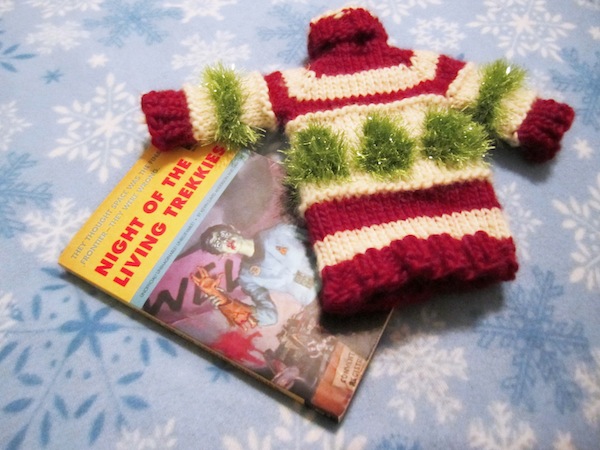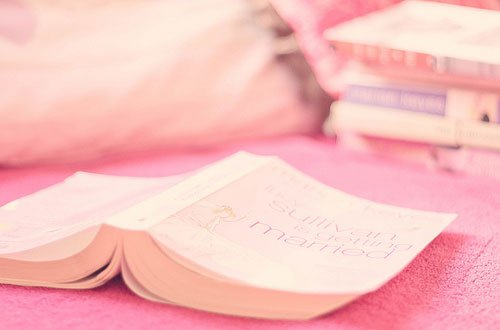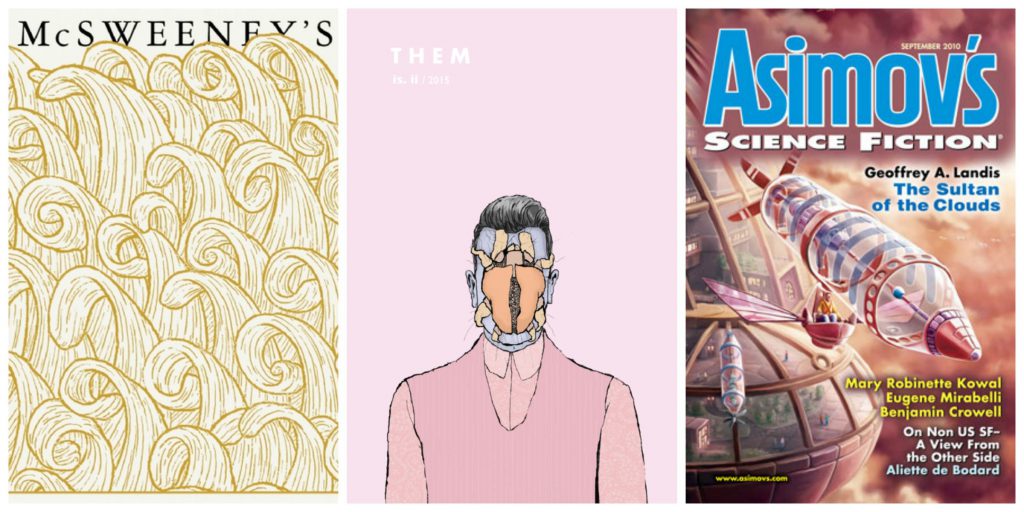Knit Lit: My Favorite Knitters in Literature
Photo by Mararie
Knitting is perhaps the quintessential unhip pastime, so it serves authors well as a convenient shorthand for earnest domesticity and obliviousness to fashion. Identifying a character as a knitter evokes a web of associations and expectations — which, of course, the clever author will sometimes turn on their head.
Here’s a skein of knitters from literature, sorted by type.

The Cozy Knitter: Peggotty (David Copperfield by Charles Dickens)
Clara Peggotty is the rosy-cheeked housekeeper who acts as a second mother to David, serving as a source of love and support to him throughout his life.
Mrs. Peggotty with the white apron, was knitting on the opposite side of the fire. Peggotty at her needlework was as much at home with St. Paul’s and the bit of wax-candle, as if they had never known any other roof. (Book One, Chapter 3)

Julie Walters as Mrs. Weasley
The Loving Knitter: Mrs. Weasley (the Harry Potter novels by J.K. Rowling)
Ron Weasley’s mother knits jumpers (sweaters) for each member of her family every Christmas, usually incorporating designs that reflect the person’s interest. Because Harry is such a close friend of the family, he gets a Weasley jumper each year.
(Hagrid, by the way, is also a knitter, as we find out when he first takes Harry to Diagon Alley: “Hagrid took up two seats [on the train] and sat knitting what looked like a canary-yellow circus tent.”

Laurie Pyper as Jane Fairfax
The Dutiful Knitter: Jane Fairfax (Emma by Jane Austen)
One of Emma’s objections to Miss Bates’s paragon of a niece is, in fact, that she knits. Emma says to Harriet:
“One is sick of the very name of Jane Fairfax. Every letter from her is read forty times over; her compliments to all friends go round and round again; and if she does but send her aunt the pattern of a stomacher, or knit a pair of garters for her grandmother, one hears of nothing else for a month. I wish Jane Fairfax very well; but she tires me to death.” (Chapter 10)

Joan Hickson as Miss Marple, Image via Little Gray Pixel
The Disarming Knitter: Miss Marple (numerous titles by Agatha Christie)
Miss Marple presents herself as a somewhat wooly-headed old maid, but she is, of course, sharp as a double-pointed needle. The very first description of her, in a short story in Sketch magazine in 1928, mentions her knitting:
[She wore] a black brocade dress, very much pinched in round the waist. Mechlin lace was arranged in a cascade down the front of the bodice. She had on black lace mittens, and a black lace cap surmounted the piled-up masses of her snowy hair. She was knitting — something white and soft and fleecy. Her faded blue eyes, benignant and kindly, surveyed her nephew and her nephew’s guests with gentle pleasure.

The Crafty Knitter: Penelope (The Odyssey by Homer)
During the long years while she awaits the return of Odysseus, Penelope devises various tricks to hold off the suitors who besiege her. One is to claim that she needs to weave a burial shroud for Odysseus’ father Laertes. She weaves every day, but then unravels her work every night.
“Weave” is obviously just a bad translation — every knitter has experienced the frustration of ripping out rows of knitting to remove an uncorrectable mistake. The more literary of us mutter about feeling like Penelope as we do so.

The Evil Knitter: Mme. Defarge (A Tale of Two Cities by Charles Dickens)
Mme. Defarge is probably the most famous knitter of literature. Her knitting isn’t the harmless activity of an old lady, but rather how she creates an encoded list of enemies of the Revolution who will be put to death.
“You knit with great skill, madame.”
“I am accustomed to it.”
“A pretty pattern too!”
“You think so?” said madame, looking at him with a smile.
“Decidedly. May one ask what it is for?”
“Pastime,” said madame, still looking at him with a smile while her fingers moved nimbly.
“Not for use?”
“That depends. I may find a use for it one day. If I do — Well,” said madame, drawing a breath and nodding her head with a stern kind of coquetry, “I’ll use it!” (Book Two, Chapter 16)

The Really Evil Knitter: The Once-ler (The Lorax by Dr. Seuss)
The Once-ler cut down a Truffula tree and used it to knit a Thneed, an odd-shaped garment that everyone needs. Though the Lorax protests, the Once-ler and his family build a Thneed factory, cutting down all the Truffula trees, polluting the environment and destroying the habitat of numerous Seussian critters. Luckily, the Once-ler kept one Truffula seed, so there’s hope for the future.

The Real-life Knitter: Dorothy Parker
Dorothy Parker took her knitting with her everywhere. During her time in Hollywood, she wrote screenplays with her husband Alan Campbell. Actually, Alan typed like mad, while Dorothy knit and dictated the dialogue.
The requisite Dorothy Parker quote, from a review of a forgettable musical: “If you don’t knit, bring a book.”
Words to live by.
—
Homemade Quirk: Follow the community on Twitter, like it on Facebook!




